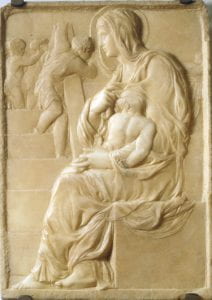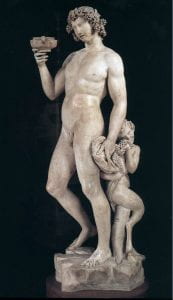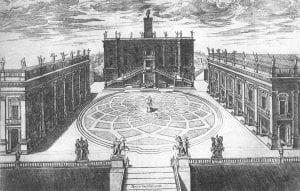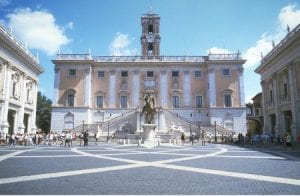11: Ancient and Moderns in Rome’s Visual Culture
Humanist culture: ancient models, modern world
The Domus Aurea and Grotesques
Nero: begun after fire in Rome, 64 CE; some sections survived until 114
Domus Aurea website
Rediscovery: late 15th c (by 1480s)
Artists’ visits: first known examples of ancient Roman painting

Sala della Sfinge (disc. 2018): painted walls
Raphael: Vatican Loggia, also Villa Farnesina
Raffaello Sanzio (1483-1520)
- Urbino (father a painter at court)
- Ca 1504 time in Florence
- 1508 Julius II invited him to Rome
- Vatican Stanze
- 1514 (death of Bramante): in charge of St Peter’s plans
- Grotesques: exx Loggia at Vatican, at Villa Farnesina (Agostino Chigi)
- Prefect of antiquities
- Letter of request to Leo X: identify, preserve Rome’s antiquities
Major Discoveries of ancient sculpture
Michelangelo Buonarroti (1475-1564)
- Caprese
- Settignano
- Domenico Ghirlandaio
- Lorenzo de’ Medici
- Early reliefs

Madonna della Scala 1492 Casa Buonarroti |

Centauromachia, 1492 Casa Buonarroti |
- 1494 Bologna, back to Florence
- Sleeping Cupid
- Lorenzo di Pierfrancesco de’ Medici
- Cardinal Raffaele Riario
- 1496 Rome

Bacchus; rejected by Riario, sold to banker Jacopo Galli for his garden. Florence 1572 1497-8 (French ambassador) Pietà
Florence, Museo Nazionale del Bargello
|

Pietà (1498-99) Rome, Vatican, St Peter |
1499 Florence: David 1504
1505 Rome: tomb of Julius II (unfinished) San Pietro in Vincoli
1508-12 Sistine chapel ceiling
Sistine Chapel Penn Images Sistine Chapel General
Leo X: work in Florence (Medici Chapel and more)
1534 Rome Clement VII
1534-41 Last Judgment; Capitoline; more

Michelangelo, Campidoglio plan, engraved by Étienne Dupérac, 1568 |
 |
1546 named architect of St Peter’s


